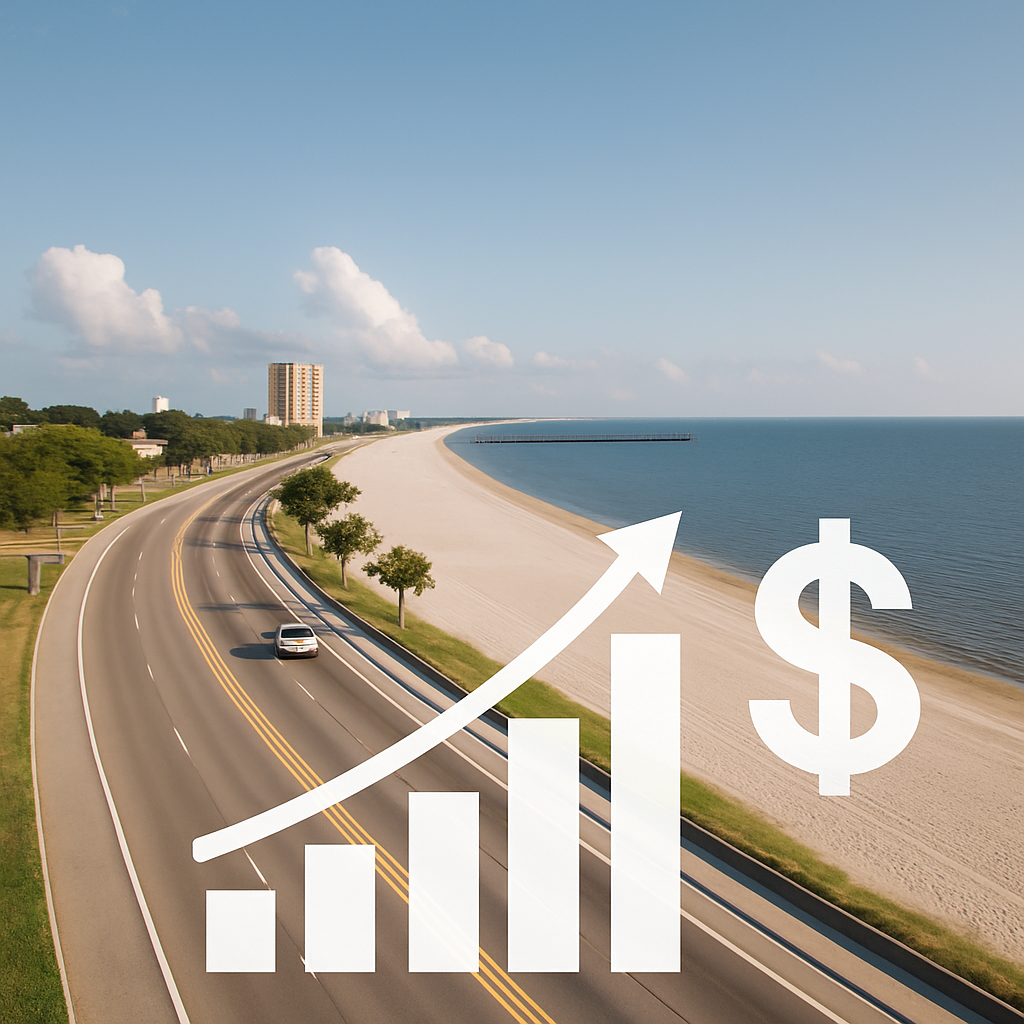
When savvy investors scan the national landscape for high-yield commercial real estate (CRE) markets, Mississippi CRE investing is quietly emerging as a powerhouse of opportunity. Often flying under the radar of institutional capital, this dynamic three-county region—comprising Harrison, Hancock, and Jackson counties—is no longer just a tourism and gaming hub. It's a strategic nexus of aerospace, advanced manufacturing, international logistics, and military might, creating a compelling investment thesis for those willing to look beyond the primary Sunbelt markets.
For Mississippi CRE investing focused on yield, strategic growth, and efficient capital deployment, the Mississippi Gulf Coast offers a rare combination of a diverse, expanding economic base and favorable asset pricing. It isn't about speculative bets; it's about data-driven decisions in a market anchored by tangible, long-term growth drivers. This guide will delve into the core economic pillars fueling CRE demand, spotlight key infrastructure projects, and provide a strategic framework for maximizing returns in this overlooked corner of the Gulf South.
While the sugar-white sand beaches and vibrant casinos remain significant economic contributors—generating over $1.6 billion in gaming revenue in 2023—the true story for investors lies in the region's remarkable economic diversification. A convergence of public and private investment has cultivated a robust ecosystem that provides stability and creates demand across all CRE sectors.
This diverse economic activity translates directly into opportunities across various commercial property types. Understanding these sector-specific dynamics is key to crafting a successful investment strategy on the Mississippi Gulf Coast.
The confluence of the Port of Gulfport's expansion and the region's manufacturing base makes the industrial sector the most compelling play for Mississippi CRE investing.
While the state's overall population growth is flat, the Gulf Coast is a pocket of expansion. The influx of military personnel, aerospace engineers, and port-related workers creates steady and reliable demand for rental housing.
With over 14 million visitors annually and a growing residential population, the retail and hospitality sectors remain robust.
The Mississippi Gulf Coast market is not just about buying low and hoping for appreciation. Its unique characteristics make it ideal for more sophisticated strategies that can dramatically amplify returns, particularly for investors transitioning out of low-yield assets in more compressed markets.
Many investors hold highly appreciated assets in core markets where rent growth has stalled. While the property value is high, the return on the equity locked within it is often inefficient. A 1031 exchange into a higher-yielding Gulf Coast property can unlock this trapped equity and significantly boost cash flow for Mississippi CRE investing.
Consider this scenario:
An investor owns a retail property in a primary market, now valued at $5 million with a $2 million mortgage, leaving $3 million in equity. The property generates a Net Operating Income (NOI) of $225,000 annually.
The Return on Equity (ROE) is calculated as: ROE=EquityNOI=$3,000,000$225,000=7.5%
By executing a 1031 exchange, the investor sells the property and reinvests the entire $5 million of proceeds into a stabilized industrial or retail asset on the Mississippi Gulf Coast at a more attractive 7.5% capitalization rate.
The new property's NOI would be: NOI=PurchasePrice×CapRate=$5,000,000×0.075=$375,000
By maintaining the same $3 million in equity and securing a new $2 million loan, the investor has increased their annual cash flow by $150,000, effectively doubling their return on equity to 12.5% before considering loan amortization. This strategic redeployment of capital is a powerful tool for wealth creation.
While often overlooked, acquiring properties on a leasehold basis—where you own the building but not the underlying land—can offer superior cash-on-cash returns and a higher Internal Rate of Return (IRR). The key is that these assets are priced at a discount to their fee-simple counterparts to account for the fact that the asset's value will be zero at the end of the ground lease.
On the Gulf Coast, many stable properties, including STNL assets and retail centers, are situated on long-term ground leases, some with public entities like school boards.
Let's compare two potential investments:
An investor might acquire the leasehold property with 25% down ($200,000). The leveraged cash-on-cash return in the initial years would be significantly higher than the fee-simple alternative. The model doesn't assume any residual value at the end of the lease so the entire return is generated from cash flow. This front-loads the returns and, when priced correctly, can produce a higher overall IRR, especially for investors with a 15-to-25-year hold horizon who value predictable cash flow over final asset appreciation.
No investment is without challenges. Mississippi CRE investors must be prepared for:
However, these risks are what keep competition at bay and create the pricing dislocation that savvy investors can exploit. They represent a strategic moat for those who do their homework and underwrite conservatively.
Mississippi CRE investing is a story of strategic convergence. It is where infrastructure investment meets a diversified industrial base, and where favorable demographics meet undervalued assets. For investors seeking to move beyond the crowded, low-yield environment of primary markets, the Gulf Coast offers the core tenets of intelligent investing: durable cash flow, tangible growth drivers, and significant upside potential.
In today's capital-constrained climate, the hunt for yield is paramount. The Mississippi Gulf Coast is not just a place to find it—it's a place to build lasting wealth.
Author Bio:
Grey Molyneaux is a commercial real estate agent specializing in seller representation on the Mississippi Gulf Coast. With a strong background in sales and marketing, he helps property owners maximize their real estate investments through strategic marketing. Grey is also a dedicated husband, father, and musician, balancing his professional expertise with his creative passions.

(228) 278-6616
grey@molyneauxgroup.com